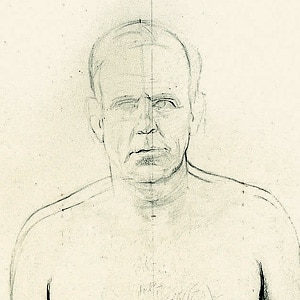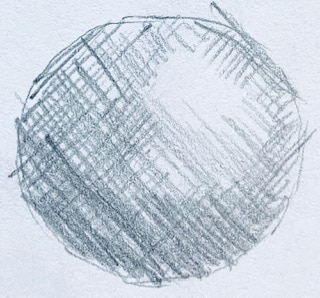Drawing is very fun but can be equally challenging. However, it is an incredibly rewarding process! The more effort you put into it, the more you will get out of it. Below are the top 5 drawing tips for beginners to help you on your drawing journey.
Measure As Much As You Can
Measuring is vital in drawing. You need to capture the correct proportion of what you are studying so as to get an accurate representation of it. There are numerous tips and techniques you can use to help yourself measure as accurately as you can. One of the simplest of methods is to have a thin but straight stick handy. Use the stick to hold up in front of what you are drawing so you can measure the distance between things. Then, when returning to your drawing, adjust the proportion accordingly.
Also, it is handy to use a string in order to measure angles. It can be hard sometimes to determine the precise angle of a line. However, when using a string you can place it over the angle you are observing to get an accurate measurement. While holding that angle still with your hands, place it over your drawing to make sure that your angle is the same as what you are looking at.

In the drawing above by Antonio Lopez Garcia, you can literally see the precise measuring. He leaves marks and lines in areas to be able to compare them to other areas. This is an excellent example of how you can also use marks and lines to compare some areas to other areas in order to get accurate measurements.
Value
Value is a crucial element in drawing if you are wanting to add shading – it is one of the most important drawing tips for beginners. You can just stick to a line drawing if you do not wish to add any shading. However, if you want to have a sense of light in your drawing then value is very important!
Simplify the values of what you are looking at. Try to divide them into three or four different categories. One category being the darkest values, another being the lightest values in your piece, and the last being the medium values that are in between the lightest and darkest values.

This Edwin Dickinson Drawing is an excellent example of values being simplified. Look at the stove on the right side of the drawing. The right side of the stove is made up of almost a single value! The artist did not bother with the small shifts in value. Rather, he focused on the big picture of dividing up the values into their respective areas. You can find the areas that are the lightest in value, and you can find areas that are the ‘darkest’. As well, you will notice all the areas he categorized as being ‘middle values’.
Copy other Drawings
Looking at and copying drawings from others who are more advanced is a fantastic way to learn! Go to your local library and look at old master drawings in books. Or simply browse google to find some of your favorites draftsmen.
If you want to take it a step further though, I highly recommend to make copies of the drawings you admire. When you do so, you learn a lot about line quality and composition and how to incorporate it into your own drawing. Do not worry about trying to create a beautiful copy, but rather focus on learning as much as you can from the process of studying. Over time, your drawing with improve dramatically.
In addition to looking at great drawings it is also a good idea to reading about drawing. Leonardo Da Vinci’s ‘A Treatise on Painting‘ has some wonderful wisdom for those wanting to learn how to improve their drawing. Also, I outlined some drawing lessons from Leonardo Da Vinci.
Line Quality/ Control Edges
Developing a clear line quality is important in drawing. You want to have a sense of confidence when putting down your lines. It is easy to spot drawings that have hesitant lines – light uncertain chicken scratch marks! When drawing, put your lines down with a sense of confidence. Of course, measure before you put something down. If you find your lines/ marks to be incorrect later on, then just erase and start over, but always approach your line making with a sense of certainty. You just want to balance that by checking your own measurements over to make sure of their correctness. 🙂
Also, line is related to creating a sense of value in that darker areas have darker lines and lighter areas have lighter lines. So, when creating a line drawing, do pay attention to varying the value and width of your line.

This drawing by Ingres is a perfect example of varying line quality. You will notice he created a lot of lighter lines but also darkened his lines in areas that were darker. Some areas of a line are darker and wider than other areas.
Experiment With Mark Making
When drawing, it is good to spend some time experimenting with different methods and techniques. More specifically however, it is great to try different ways of mark making! Here are a few outlined
Cross Hatching

Finger Smudge

Hatching

Scribbling

I hope you learned a few tips about drawing from this post! If you are wanting to learn more, check out ‘Drawing Lessons From Leonardo Da Vinci.”







7 thoughts on “5 Drawing Tips for Beginners to Learn How to Draw”
Hi Lizzie
Another of my stumble block… Whilst browsing thru’ your site I came across your video where you explained how to sketch a small picture so as to see ‘how it looks’ in the final result. But try as I may I couldn’t locate it. Could you please guide me where it is?
Thanks so much. As usual I am still struggling with my Death of Hypatia creation.
Joe.
Hi Joe, It is possible that you are thinking of my article on thumbnail sketches, the video can be found at the top of the article here. Good luck with your piece! It is a process, but am sure you will make it come together.
DEAR ELISABETH
it is an important lesson.
wonderful,
good base for painting,
thanks
ruth cohen
Good to hear from you Ruti! Very glad that you enjoyed this lesson 🙂
This is great! Must now practice…
Thank you! Yes it always takes lots of practice!
This is very informative learning.Well explained.
Thank you